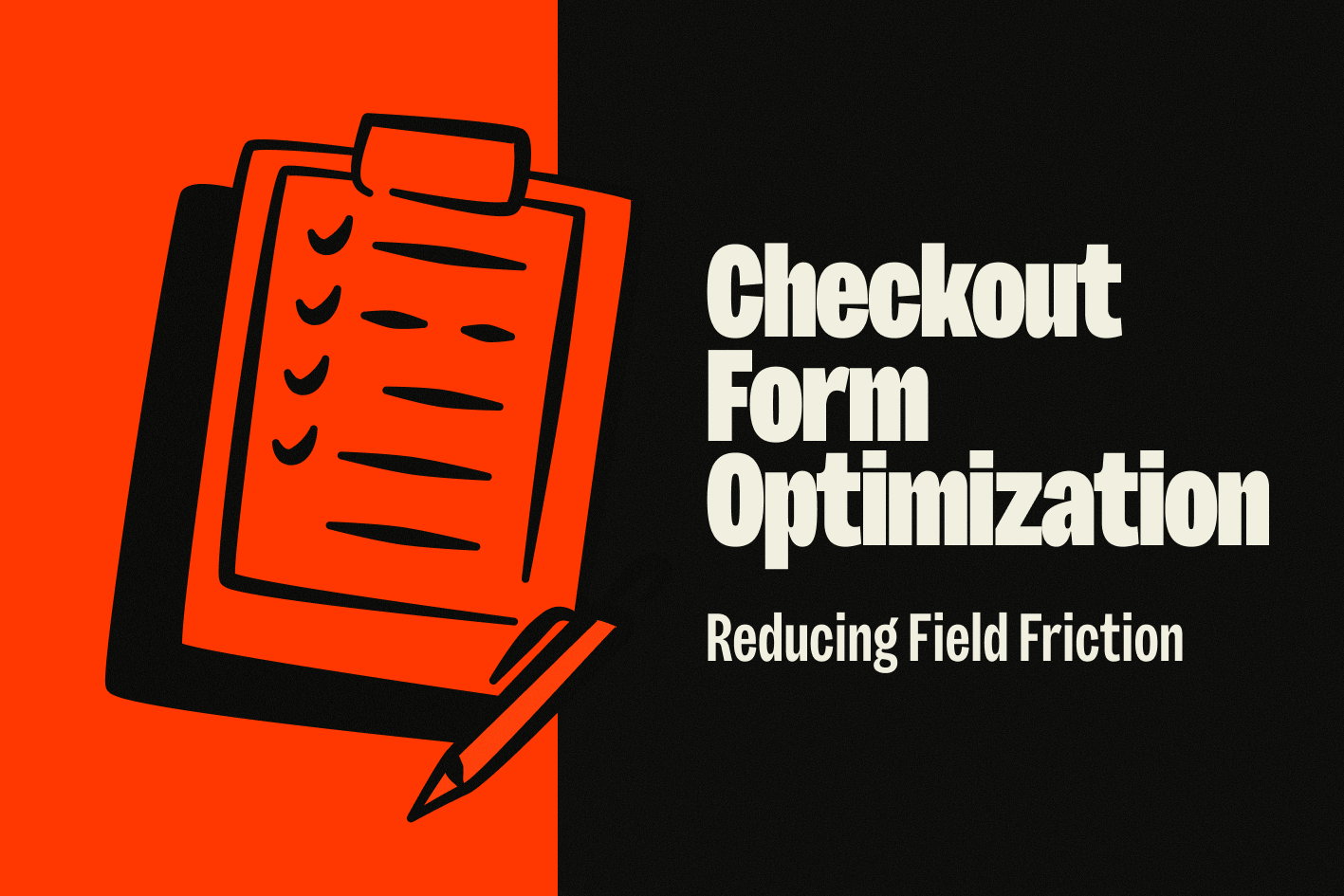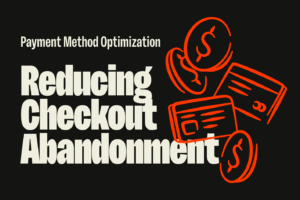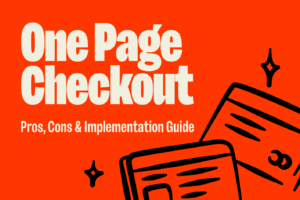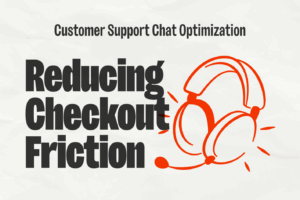Checkout form design directly determines whether customers complete purchases or abandon their carts at the final moment. With form-related issues causing 27% of checkout abandonments in 2025, optimizing every field, validation message, and interaction becomes crucial for conversion success. Research shows that reducing form fields from 11 to 4 can increase conversions by 120%, making strategic form optimization essential for eCommerce profitability.
Table of Contents
The Critical Impact of Form Design on Checkout Conversion
Form friction represents one of the most controllable factors in checkout optimization, yet remains a primary cause of revenue loss across eCommerce platforms.
Form Field Statistics and User Behavior
Current data reveals the direct relationship between form complexity and abandonment rates:
Form Abandonment by Field Count:
- 1-3 fields: 15% abandonment rate
- 4-6 fields: 25% abandonment rate
- 7-10 fields: 35% abandonment rate
- 11+ fields: 68% abandonment rate
Completion Time Correlation: Research shows that every additional 10 seconds in form completion time increases abandonment by 7%. The average customer expects checkout completion within 2-3 minutes, with tolerance decreasing on mobile devices.
Mobile vs Desktop Patterns: Mobile form interaction patterns differ significantly from desktop:
- Mobile completion time: 40% longer than desktop average
- Mobile error rate: 25% higher due to touch input challenges
- Mobile abandonment: 35% higher for forms over 6 fields
- Mobile retry rate: 18% lower when forms fail validation
Psychology of Form Completion
Understanding the psychological factors influencing form completion enables strategic design decisions that support user motivation.
Cognitive Load Management: Each form field adds cognitive burden, with compound effects:
- Memory load: Customers must remember and organize information
- Decision fatigue: Multiple choices reduce completion motivation
- Progress uncertainty: Unclear completion requirements create anxiety
- Trust concerns: Excessive information requests raise security worries
User Motivation Patterns: Customer motivation follows predictable patterns through form completion:
- Initial high motivation: Strong purchase intent at form start
- Gradual decline: Motivation decreases with each additional field
- Critical threshold: 7-field mark where abandonment accelerates
- Recovery opportunity: Clear progress indicators can restore motivation
Essential vs Optional Field Analysis

Strategic field selection requires distinguishing between truly necessary information and convenience features that may cost conversions.
Absolutely Required Checkout Information
Only four categories of information prove essential for order completion:
Email Address for Order Confirmation: Email serves multiple critical functions:
- Order confirmation: Legal and practical requirement
- Shipping updates: Tracking and delivery notifications
- Customer support: Primary communication channel
- Account recovery: Future purchase facilitation
Shipping Address for Product Delivery: Physical delivery requires complete address information:
- Recipient name: Delivery identification
- Street address: Physical location specification
- City/state/zip: Geographic routing requirements
- Country: International shipping determination
Payment Information for Transaction Completion: Financial transaction requires payment method details:
- Card number or digital wallet: Payment authorization
- Expiration and security code: Fraud prevention
- Billing name: Cardholder verification
- Payment method selection: Multiple option handling
Commonly Over-Required Fields
Many checkout forms request information that doesn’t impact order fulfillment:
Phone Number Requirements: Phone numbers often aren’t essential:
- Delivery issues: Most carriers use email for notifications
- Order updates: Email provides better tracking
- Customer service: Multiple contact options exist
- Marketing concerns: Requesting phone numbers raises privacy concerns
Alternative Solutions:
- Make phone numbers optional with clear benefit explanation
- Use progressive profiling for future purchases
- Implement SMS opt-in after successful orders
- Provide phone support without requiring customer numbers
Company Name for Individual Purchases: B2C transactions rarely need company information:
- Individual buyers: Personal purchases don’t require business details
- Invoice complications: Company names may complicate personal billing
- Unnecessary complexity: Additional field without clear benefit
- B2B distinction: Create separate flows for business customers
Smart Field Consolidation Strategies
Reducing field count through intelligent combination maintains information collection while improving user experience.
Name Field Consolidation: Single name fields often work better than separate first/last:
- Cultural considerations: Not all cultures use first/last name structure
- Reduced cognitive load: One decision instead of two
- Mobile optimization: Less typing on small keyboards
- Processing flexibility: Backend systems can parse single names
Address Line Optimization: Consider single address lines for most customers:
- User preference: Many customers prefer typing addresses naturally
- Auto-complete integration: Single fields work better with address services
- Mobile convenience: Reduces form scrolling and field navigation
- International compatibility: Works better for various address formats
Form Field Design and User Experience
Visual design significantly impacts form completion rates through clear communication and reduced friction.
Visual Form Design Principles
Strategic visual design guides users through forms efficiently while building confidence.
Single-Column Layout Benefits: Single-column forms consistently outperform multi-column designs:
- Reduced cognitive load: Linear progression is mentally easier
- Mobile compatibility: Works naturally on narrow screens
- Scanning patterns: Follows natural eye movement patterns
- Error prevention: Reduces chances of skipping fields
Visual Hierarchy and Information Grouping: Logical information organization improves completion rates:
- Related field grouping: Payment information together, shipping information together
- Progressive disclosure: Show fields as they become relevant
- Visual separation: Clear boundaries between information sections
- Completion progress: Visual indicators of form progress
Clear Field Labels and Placeholder Optimization: Effective labeling reduces confusion and errors:
- Descriptive labels: Clear, specific field purposes
- Placeholder examples: Show expected format without instructions
- Required field indicators: Clear visual distinction for mandatory fields
- Help text positioning: Contextual assistance without clutter
Field Input Type Optimization
Appropriate input types improve mobile experience and reduce errors.
Mobile Keyboard Optimization: Correct keyboard types significantly improve mobile form completion:
- Numeric keyboards: Phone numbers, zip codes, credit card numbers
- Email keyboards: Email addresses with @ and .com shortcuts
- URL keyboards: Website addresses with .com shortcuts
- Decimal keyboards: Monetary amounts and measurements
Auto-Complete and Suggestion Integration: Smart suggestions reduce typing and prevent errors:
- Address auto-complete: Google Places API or similar services
- Email domain suggestions: Common domain corrections
- Name formatting: Automatic capitalization for proper names
- Payment method recognition: Automatic card type detection
Progressive Disclosure Techniques
Showing information progressively reduces perceived form length while maintaining data collection.
Conditional Field Display: Show fields only when relevant to user selections:
- Shipping method dependence: Express shipping may require phone numbers
- Payment method fields: Different fields for cards vs digital wallets
- Gift options: Gift message fields only when gift checkbox selected
- Account creation: Registration fields only if user opts to create account
Smart Defaults and Pre-Population: Intelligent defaults reduce user effort:
- Location-based defaults: Country and state from IP geolocation
- Previous purchase data: Shipping preferences from order history
- Browser storage: Saved preferences from previous sessions
- Social login integration: Pre-fill information from social profiles
Advanced Form Validation Strategies
Effective validation prevents errors while providing helpful guidance throughout the form completion process.
Real-Time Validation Implementation
Instant feedback improves user confidence and reduces form abandonment.
Instant Feedback for Correct Entries: Positive validation encourages continued progress:
- Green checkmarks: Visual confirmation of correct entries
- Progress indicators: Show completion status for complex fields
- Format confirmation: Confirm email and phone number formats
- Address validation: Real-time address verification and suggestion
Inline Error Messaging: Strategic error messaging prevents frustration:
- Immediate feedback: Show errors as soon as detectable
- Specific guidance: Explain exactly what’s wrong and how to fix it
- Non-intrusive design: Errors shouldn’t disrupt form layout
- Recovery assistance: Suggest corrections when possible
Address Validation and Correction: Smart address handling reduces delivery issues:
- Real-time verification: Validate addresses as users type
- Suggestion prompts: Offer corrections for invalid addresses
- Format standardization: Convert addresses to postal service standards
- International support: Handle various country address formats
Error Prevention and Handling
Preventing errors proves more effective than correcting them after submission.
Clear Error Message Language: Error communication should guide rather than frustrate:
- Plain language: Avoid technical jargon in error messages
- Specific problems: Explain exactly what’s wrong
- Clear solutions: Provide actionable steps for correction
- Positive tone: Maintain helpful rather than accusatory language
Prevention vs Correction Approach: Design forms to prevent common errors:
- Input constraints: Limit field lengths and acceptable characters
- Format guidance: Show expected formats before errors occur
- Auto-formatting: Format phone numbers and credit cards automatically
- Confirmation fields: Double-check critical information like email addresses
Mobile Form Optimization Specifics

Mobile optimization requires dedicated attention as mobile commerce represents 73% of eCommerce traffic in 2025.
Touch-Friendly Form Elements
Mobile forms must accommodate finger-based interaction patterns.
Minimum Touch Target Sizing: Apple and Google both recommend 44-48px minimum touch targets:
- Form field height: Minimum 44px tall for easy tapping
- Button sizing: Large enough for accurate finger placement
- Spacing considerations: Adequate space between interactive elements
- Thumb zone optimization: Place primary actions within easy thumb reach
Mobile-Specific UX Enhancements: Mobile forms benefit from specialized design considerations:
- Floating labels: Labels that move above fields when focused
- Sticky progress: Keep progress indicators visible while scrolling
- Gesture integration: Swipe between form steps where appropriate
- Camera integration: Allow camera scanning for credit card information
Mobile Payment Integration
Mobile payment options significantly improve conversion rates.
Digital Wallet Integration: Modern mobile payment methods reduce form completion requirements:
- Apple Pay integration: One-touch checkout for iOS users
- Google Pay support: Quick payment for Android users
- PayPal Express: Skip most form fields entirely
- Shop Pay and similar: Platform-specific quick checkout options
Mobile Payment Benefits: Digital wallets address multiple mobile pain points:
- Reduced typing: Minimal information entry required
- Stored information: Addresses and payment methods pre-filled
- Security trust: Users trust established payment platforms
- Speed optimization: Completion in seconds rather than minutes
Form Performance and Technical Optimization

Technical performance affects form usability and completion rates.
Form Loading and Rendering Speed
Fast-loading forms prevent user frustration and abandonment.
Progressive Form Rendering: Load critical form elements first:
- Above-the-fold priority: Load visible fields immediately
- Below-the-fold lazy loading: Load additional fields as needed
- JavaScript enhancement: Enhance forms without blocking initial rendering
- Critical path optimization: Prioritize essential form functionality
Form Submission Processing: Handle form submissions gracefully:
- Optimistic UI updates: Provide immediate feedback while processing
- Progress indicators: Show submission progress for slow connections
- Error recovery: Handle network failures and timeouts gracefully
- Success confirmation: Clear completion messaging and next steps
Form Analytics and Tracking
Comprehensive analytics identify optimization opportunities.
Field-Level Abandonment Tracking: Understanding where users leave forms enables targeted improvements:
- Exit point analysis: Identify specific fields causing abandonment
- Time-to-completion tracking: Monitor field completion duration
- Error rate monitoring: Track validation failures by field
- Device-specific patterns: Compare mobile vs desktop behavior
Conversion Funnel Analysis: Form analytics should integrate with broader conversion tracking:
- Traffic source performance: How different sources convert through forms
- A/B test impact: Measure form changes against conversion rates
- Customer segment behavior: Different user types may have different needs
- Revenue correlation: Connect form completion to actual purchase value
A/B Testing Form Elements
Systematic testing reveals optimal form configurations for specific audiences and products.
Field Count and Layout Testing
Form structure significantly impacts completion rates.
Single Page vs Multi-Step Comparison: Testing reveals optimal form presentation:
- Perceived vs actual complexity: Multi-step may feel easier despite same field count
- Mobile vs desktop preferences: Different optimal structures by device
- Product category impact: High-value purchases may tolerate longer forms
- Customer type differences: New vs returning customers may have different tolerances
Field Order and Grouping Optimization: Strategic field sequence affects completion:
- Easy fields first: Build momentum with simple information
- Payment information timing: Test early vs late payment field placement
- Required vs optional placement: Strategic positioning of non-essential fields
- Logical information flow: Group related information effectively
Design Element Testing
Visual design elements significantly impact form conversion rates.
Button Design and Placement: Call-to-action optimization affects final conversion:
- Button copy testing: “Complete Order” vs “Submit” vs custom copy
- Color and contrast: High-contrast buttons improve visibility
- Size optimization: Larger buttons generally perform better
- Placement strategy: Above-the-fold vs bottom placement testing
Trust Signal Integration: Security and trust indicators affect form completion:
- Security badge placement: Test various positions for trust signals
- SSL certificate visibility: Make security obvious to users
- Money-back guarantees: Reduce purchase risk perception
- Customer testimonials: Social proof near form completion
Professional Form Optimization Services
Complex form optimization often requires expert analysis and implementation for maximum results.
When to Invest in Form Optimization Expertise
Professional optimization becomes valuable when:
- High abandonment rates: Forms showing >40% abandonment need expert attention
- Mobile conversion gaps: Significant mobile vs desktop performance differences
- Complex product requirements: Technical or B2B products with specialized needs
- Revenue impact justification: High cart values make optimization ROI compelling
Expected Conversion Improvements: Professional form optimization typically achieves:
- 20-60% reduction in form abandonment through strategic field reduction and design
- 15-35% increase in completion rates via improved validation and user experience
- 25-50% improvement in mobile conversions through mobile-specific optimization
- 10-25% overall checkout conversion improvement when integrated with broader checkout optimization
How Glued Optimizes Checkout Forms for Maximum Conversion: Our comprehensive approach includes form audit and analysis, field reduction strategy, validation optimization, mobile-first design, and continuous testing to ensure checkout forms support rather than hinder the purchase completion process.
Ready to eliminate form friction from your checkout process? Get a free form optimization consultation to identify your biggest opportunities and create a custom form optimization strategy.





